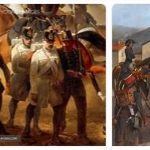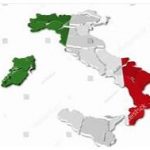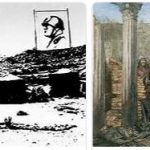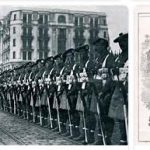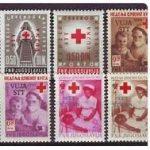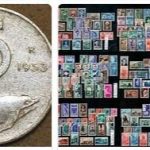Italy during the Revolution and the Empire Part 1
The spirit of the great Italian masses at the news of the French Revolution proved extremely hostile. The news gathered from the voices of the emigrants, and repeated by those who mourned their fate, struck the imagination and above all the religious conscience of the people, and spread among the Italians the idea that the political freedom banned by the revolutionaries was religious impiety. It took more than half a century for this prejudice to be eradicated. Like the people, the clergy and the nobility were hostile to the Revolution for the same religious reasons as well as for fear of the loss of all privileges. However, both among the clergy and among the nobility, not a few gave a good face to the new ideas. They were educated men, old Jansenists, readers and followers of the encyclopedists, in short, all those who in the second half of the century had participated in the movement of new ideas, followed the reforms with interest, hoped for a religious reform. They were joined by students and teachers from the universities, especially in Naples, Pavia and Bologna, and more or less numerous groups of the bourgeoisie. In truth, the Italian industrial and mercantile bourgeoisie of the second half of the eighteenth century was poor in numbers and capital. However, the business movement developed during the wars of succession; economic reforms of principles, with the abolition of corporative systems and monopolies and the tendency of legislation towards the freedom of trade; the fervor of agricultural activities which took place in some regions, had enriched the bourgeoisie, especially the agrarian bourgeoisie, with new elements, infused in it a new energy and a new soul. All this especially in the Po valley and in Lombardy more than anywhere else, where there were many contacts of all kinds with France. Overall, the cities were prepared for the new events. And revolutionary France did not fail to exercise widespread propaganda there. It was the old policy of expansion towards Italy, and which now unfolded the banner of freedom, equality and fraternity. Thus movements were provoked in Nice and Savoy, and in 1792 Nice was occupied. Other attempts were made in Piedmont the following year. But Vittorio Amedeo III was able to validly oppose the invasion of Savoy from ’92 to ’96. The campaign of the Alps is a beautiful page of military value and loyalty of the army and of the Savoy subjects.
According to ITYPEMBA, these were the conditions of the Italian public spirit, when the Directory decided the enterprise of Italy and, in March 1796, entrusted its command to Napoleon Bonaparte. The Italian campaign takes place in two phases: in the first, Bonaparte wins the king of Sardinia and forces him to give him Savoy, Nice and some fortresses; in the second he wins the Austrians and with them he marks the treaty of Campoformio (October 1797). Austria renounced Lombardy and was compensated by the republic of Venice. The old republic, neutral so as not to injure Austria and France, after the war, was suppressed by France and Austria. During the campaign against the Austrians, an expedition by Bonaparte on the lands of the Papal State had forced the pope, with the peace of Tolentino, to renounce the legations of Ferrara and Bologna.
After the French occupation of Lombardy, profound political changes take place in Italy, to which the Italians themselves concur. In October 1996, Emilian patriots, gathered in Modena, decided with the consent of Bonaparte to convene a congress in Reggio. And here, in November, the Cispadana Republic was proclaimed, largely formed by the territory of the Duchy of Modena. In July 1997, Bonaparte allowed Lombardy to join the Cispadana, forming the new Cisalpine Republic. In the same year, the republic of Genoa was democratized, i.e. replaced by a democratic government under the French protectorate. In 1998, Carlo Emanuele IV, who succeeded Vittorio Amedeo III, was forced to renounce Piedmont in favor of France. In the same year the temporal government was overthrown and the Roman Republic was established. The king of Naples Ferdinand IV had wanted to lash out against it, but, forced to flee hastily, he fled to Sicily; and in January 1799 the Neapolitan Republic was proclaimed in Naples. In that same month the republic of Lucca and the grand duchy of Tuscany were democratized.
Thus, at the end of March 1799, with the exception of Veneto under the dominion of Austria, of Sardinia which remained under Carlo Emanuele IV, and of Sicily where, protected by the English, Ferdinand IV had repaired, all the rest of Italy directly or indirectly it was in the power of the French. The political situation was profoundly changed a few months later. After the coalition against France was reconstituted during Bonaparte’s venture into Egypt, an Austro-Russian army drove the French out of northern Italy (August 1799), while the armed masses of Cardinal Ruffo rose from southern Italy to Naples.

